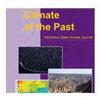Carbon isotope chemostratigraphy, geochemistry, and biostratigraphy of the Paleocene–Eocene Thermal Maximum, deepwater Wilcox Group, Gulf of Mexico (USA)
IF 3.8
2区 地球科学
Q1 GEOSCIENCES, MULTIDISCIPLINARY
引用次数: 1
Abstract
Abstract. The Paleocene–Eocene Thermal Maximum (PETM) represents the most pronounced hyperthermal of the Cenozoic era and is hypothesized to have resulted in an intensification of the paleohydrologic cycle, including enhanced seasonality and increased sediment discharge to the coastal ocean. Although the PETM has been widely documented, there are few records from deposits that form the distal, deepwater components of large sediment-routing systems. This study presents new constraints on the stratigraphic placement of the PETM in the deepwater Gulf of Mexico basin through analysis of geochemical, carbon isotopic, and biostratigraphic data within a ∼124 m cored interval of the Wilcox Group. Biostratigraphic and carbon isotopic data indicate that the PETM extends over ∼13 m based on acmes in the dinoflagellate Apectodinium homomorphum and calcareous nannoplankton Rhomboaster cuspis as well as a ∼-2 ‰ shift in bulk organic δ13C values. A decrease in bioturbation and benthic foraminifera suggests that a reduction in oxygen of Gulf of Mexico bottom waters and/or an increase in sedimentation rates were coincident with the onset of the PETM. A ∼2 m lag in the depositional record separates the onset of the PETM negative carbon isotope excursion (CIE) and deposition of a 5.7 m thick interval of organic-lean claystone and marlstone that reflects a shut-off of the supply of sand, silt, and terrestrial palynomorphs to the basin. We interpret deposits of the PETM in the deepwater Gulf of Mexico to reflect the combined effects of increased erosional denudation and rising sea level that resulted in sequestration of sand and silt near the coastline but that allowed delivery of terrigenous mud to the deep sea. The similarity of oceanographic changes observed in the Gulf of Mexico and Atlantic Ocean during the PETM supports the inference that these water masses were connected during latest Paleocene–earliest Eocene times. Although deposition of typical Wilcox Group facies resumed during and after the PETM recovery, an increased influx of terrestrial detritus (i.e., pollen, spores, terrestrial organic debris) relative to marine dinoflagellates is suggestive of long-lasting effects of the PETM. This study illustrates the profound and prolonged effects of climatic warming on even the most distal reaches of large (≥1×106 km2) sediment-routing systems.墨西哥湾深水威尔科克斯群古新世-始新世热盛期的碳同位素化学地层学、地球化学和生物地层学(美国)
摘要古新世-始新世热最大值(PETM)代表了新生代最常见的高温,并被认为导致了古水文循环的加剧,包括季节性的增强和向沿海海洋的沉积物流量的增加。尽管PETM已被广泛记录,但形成大型沉积物路由系统的远端深水组件的沉积物记录很少。本研究通过分析a~124范围内的地球化学、碳同位素和生物地层学数据,对墨西哥湾深水盆地PETM的地层位置提出了新的限制条件 m的区间。生物地层学和碳同位素数据表明,PETM延伸超过~13 m基于甲藻Apectodinium homomorpum和钙质超微浮游生物Rhombaster cuspis中的顶点以及a~-2 ‰ 体有机δ13C值的变化。生物扰动和底栖有孔虫的减少表明,墨西哥湾底层水域氧气的减少和/或沉积速率的增加与PETM的发生相一致。A~2 沉积记录中的m滞后将PETM负碳同位素偏移(CIE)的开始与a5.7的沉积分开 m厚的有机贫粘土岩和泥灰岩层段,反映了向盆地供应沙子、淤泥和陆地坡缕石的减少。我们对墨西哥湾深水中的PETM矿床进行了解释,以反映侵蚀剥蚀增加和海平面上升的综合影响,这导致海岸线附近的沙子和淤泥被封存,但允许将陆源泥浆输送到深海。PETM期间在墨西哥湾和大西洋观察到的海洋学变化的相似性支持了这样的推断,即这些水团在古新世晚期-始新世早期是相连的。尽管典型威尔科克斯群相的沉积在PETM恢复期间和之后恢复,但相对于海洋甲藻,陆地碎屑(即花粉、孢子、陆地有机碎屑)的流入增加表明了PETM的长期影响。这项研究说明了气候变暖对大(≥1×106 km2)沉积物路径系统。
本文章由计算机程序翻译,如有差异,请以英文原文为准。
求助全文
约1分钟内获得全文
求助全文
来源期刊

Climate of The Past
地学-气象与大气科学
CiteScore
7.40
自引率
14.00%
发文量
120
审稿时长
4-8 weeks
期刊介绍:
Climate of the Past (CP) is a not-for-profit international scientific journal dedicated to the publication and discussion of research articles, short communications, and review papers on the climate history of the Earth. CP covers all temporal scales of climate change and variability, from geological time through to multidecadal studies of the last century. Studies focusing mainly on present and future climate are not within scope.
The main subject areas are the following:
reconstructions of past climate based on instrumental and historical data as well as proxy data from marine and terrestrial (including ice) archives;
development and validation of new proxies, improvements of the precision and accuracy of proxy data;
theoretical and empirical studies of processes in and feedback mechanisms between all climate system components in relation to past climate change on all space scales and timescales;
simulation of past climate and model-based interpretation of palaeoclimate data for a better understanding of present and future climate variability and climate change.
 求助内容:
求助内容: 应助结果提醒方式:
应助结果提醒方式:


